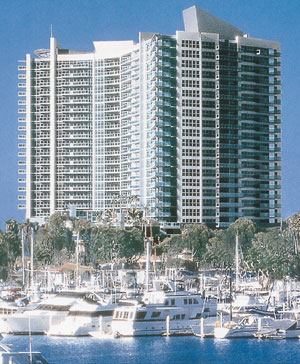Though most of the action is in low- and mid-rise units, high-rise condo developers also are eyeing the Los Angeles market. But unlike Chicago, where it is feasible to build high-rise condos projects with prices as low as the $200,000s, developers in Los Angeles face high land and construction costs, so these new projects are likely to target the wealthiest 5 percent of the population.
The few new high-rise projects to open recently in Los Angeles – The Grand (a redevelopment project) and The Remington, both located on the Wilshire corridor, and Regatta Seaside, in Marina del Rey – have tested market demand for luxury high-rise residential product and raised the bar on the meaning of the “high life.” The Grand and Regatta Seaside, priced from $750,000 to $1 million-plus, are sold out.
Their success is just the tip of the iceberg in what may become the most competitive high-rise luxury residential market in the nation. The new Los Angeles high-rise buildings are designed to rival Chicago and other mature markets in terms of luxury – if not set a new standard for what is considered luxury.
New Design Standards According to a focus group conducted by San Diego-based MarketScape, the challenge in Los Angeles will be to create a product that meets the high expectation of luxury that is inherent to Hollywood and Beverly Hills society. Design and amenities must be attractive enough to lure celebrities and wealthy empty-nesters out of their spacious homes on the west side of Los Angeles into a more compact space without sacrificing any comforts or a sense of spaciousness. Buyers moving away from opulent single-family homes want to be wowed and will only move into a building if there is nothing like it anywhere else – inside and out.
New high-rise buildings in Los Angeles will need to make a statement architecturally. Currently, developers in Chicago use poured concrete on building exteriors rather than the marble and granite that was traditionally used throughout the ’60s and ’70s. This method allows them to concentrate their resources in providing more space and amenities on the inside. But in Los Angeles, developers are going to have to focus on the entire package.
The 3,000-square-foot to 6,000-square-foot units will have to be designed to feel as spacious as buyers’ previous 10,000-square-foot to 15,000-square-foot homes and fit all the precious items they have collected over the years.
Buyers want to be impressed when they walk through the door. Interiors should include large gourmet kitchens – even if residents don’t cook – open living areas for entertaining; lots of glass and great views; fireplaces; room-sized terraces; wine storage; huge, luxurious bathrooms; large master bedrooms; lots of closet and storage space; separate quarters for the maid; and private elevators to units.
And this discriminating, well-educated group of shoppers knows quality, right down to the hinges on the closet door. Residents in this market will also expect some latitude in designing living spaces that fit their individual lifestyles.
